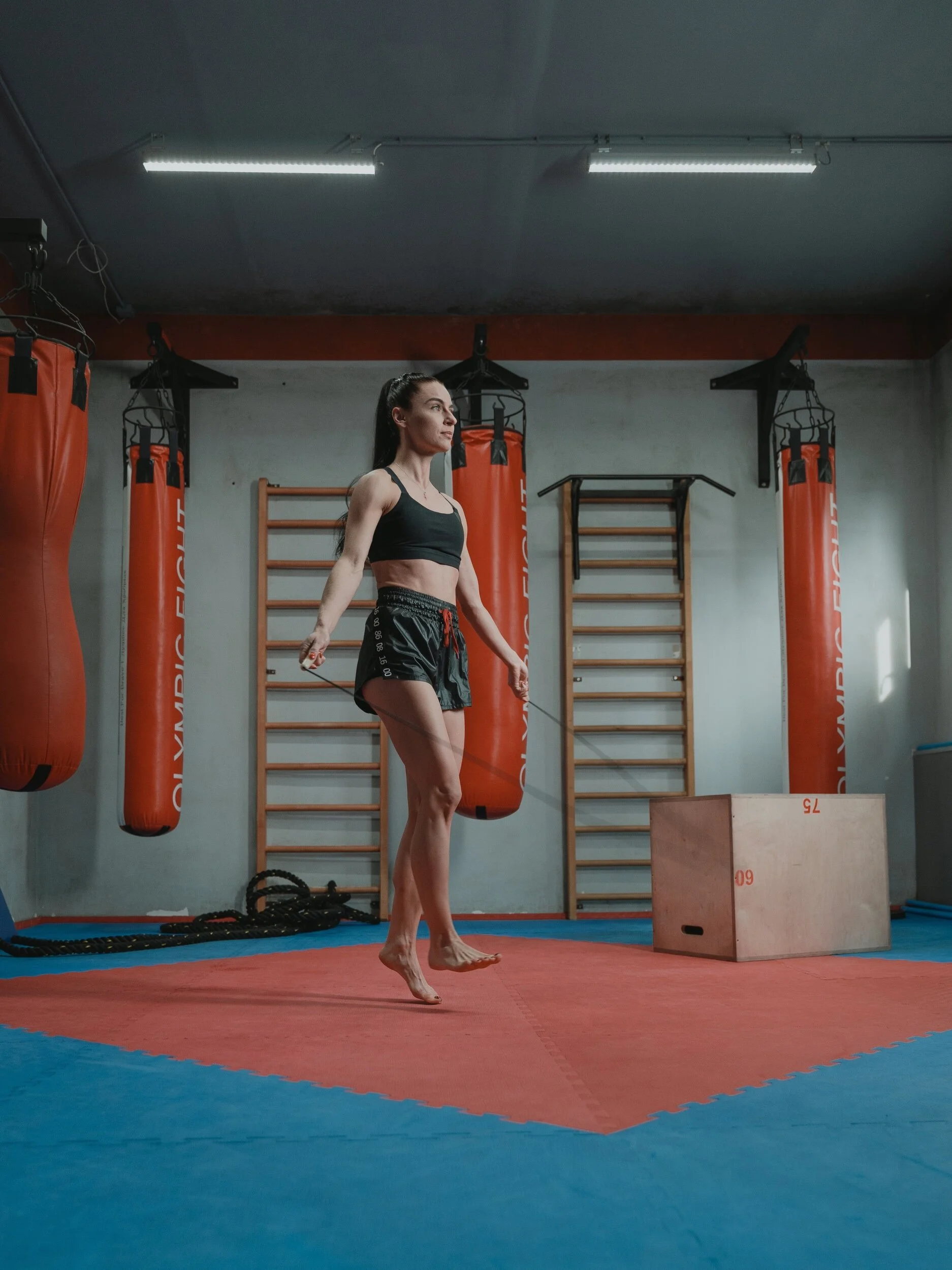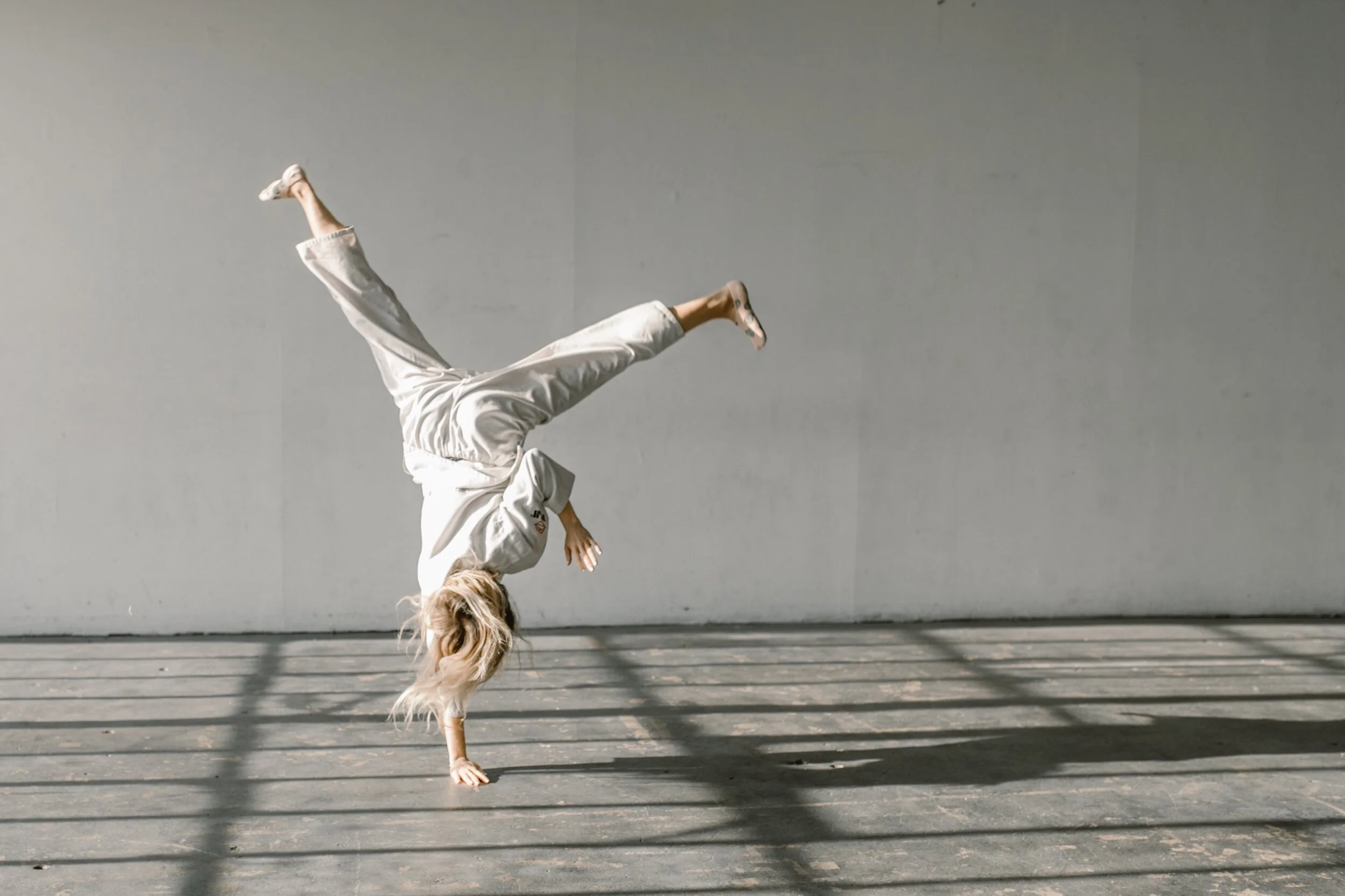Yoga and Mixed Martial Arts
Yoga and mixed martial arts are two activities that at first glance, can be seen as very different in both execution and mindset. While mixed martial arts is seen as an aggressive or violent sport, yoga is known to be peaceful and calm. There are far more parallels than differences however, and these practices can actually benefit each other in countless ways. Yoga and mixed martial arts focus on the mastery of self, both physically and mentally. Yoga also helps a martial artist to experience longevity in their craft, both in the short and long term. As you explore your body’s abilities in a yoga practice, you will have a better understanding while performing all fighting styles.
Beginning with mental mastery, yoga will better allow a martial artist to remain calm during a high intensity fight or training camp. A fighter needs to maintain a level head to perform at their best. Losing that control and focus can cause mistakes to occur. This can be seen when a “bruised ego” will cause a fighter to react from a place of anger rather than skill. Remaining in a “flow state” allows an athlete to have more ease and respond correctly when facing an opponent. Having mental mastery during a gruelling training session is also important as you push your body beyond what the mind thinks is capable. Pushing past the mental limitations can make all the difference.
During a fight, the sympathetic nervous system is activated, causing the adrenal glands to release hormones such as adrenaline and norepinephrine. These hormones cause the body to have an increased heart rate, blood pressure and rapid breathing. The ability to control your body’s natural response to a physical threat is learned in a number of ways through a regular yoga practice. Through breath-work, a fighter can govern the body’s sympathetic nervous system. By bringing awareness to these natural responses, a fighter can cause their body to relax, so that these responses do not negatively impact their performance.
Martial Artist shown working on cardio and stamina
In addition to controlling your body’s responses, coordinating your breath with your movement is vital. Slow and controlled movements require slow and controlled breaths. Fast movements such as punches require a quick burst of air. Failing to breathe properly in a fight will lead to becoming fatigued and not performing at peak potential. Martial arts such as wrestling and jiu jitsu put you into positions where your opponent can have you pinned down for minutes at a time. The ability to breathe calmly and wait for an escape can make all the difference in a match. Through practicing asanas and pranayama, a fighter can improve their cardio and stamina. This can extend the length of time they can fight for, which can make or break a fight.
A fighter must endure fatigue and pain. To overcome such adversity, they must prepare their minds as well as their body. Executing your technique to the best of your ability requires a calm and focused mind, as well as a mind-muscle connection that can only be achieved through continuous physical practice both in and out of the ring. Harnessing the mental strength that can be gained through yoga, allows an individual to withstand a fight that may not be going their way, and potentially outlast or outmaneuver their opponent. With a calm mind, even in times of great hardship, a fighter can recall their training more easily.
Examining the body’s different reactions to asanas, and exploring the full range of motion of different joints can prepare a fighter to utilise their body’s full potential. With an understanding of one’s abilities, a fighter can then push their own boundaries to perform more difficult moves. It is also important to understand one's body proportions and flexibility. In certain jiu jitsu academies, they have created strategies based on the immense flexibility of their students. 10th Planet Jiu Jitsu, under the direction of Eddie Bravo, have created entirely new moves that rely on hip flexibility to submit their opponent in ways that they may be unfamiliar with or too inflexible to retaliate. Fighting styles such as Tae Kwon Do, rely heavily on hip flexibility since the practitioner kicks high over their own head. Understanding your own skeletal range of movement can allow a fighter to withstand a submission. Alternatively, this knowledge can also allow a submission style fighter to tap out an opponent who may have very mobile joints.
The balance that one gains from a regular yoga practice can benefit fighters of all styles. Martial arts such as kickboxing and Tai Kwon Do require controlled movements while throwing kicks. The ability to pivot on the ball of your foot, and then return to a two footed stance requires not only the flexibility to rotate out at the hip, but also the balance to remain upright. When facing an opponent that is well versed in wrestling style fighting, you must remain balanced and poised for a takedown which requires immense strength, balance and form. Understanding body mechanics and balance can greatly improve a fighters offence, when getting their opponent off balance to take them down. It is clear that a fighter will have the advantage over another fighter if they have better balance, no matter the fighting style.
Flexibility gained in a regular yoga practice can not only improve a martial artist's ability to fight, it can help in regards to injuries. Properly stretching before and after training sessions can prevent serious injuries, and can help the recovery time between sessions. Maintaining that flexibility as we age is vital if we wish to continue doing sports such as jiu jitsu. Jiu Jitsu is a non-striking martial art that can be practiced until more advanced ages than fighting styles such as boxing. Striking sports that cause head trauma can only be performed for so long, but jiu jitsu can be practiced as long as joint mobility is maintained. Asanas that promote healthy cartilage and joint lubrication are truly beneficial to fighters of all ages and styles. Incorporating yoga after a training session is becoming more widely practiced, and as fighting sports gain more popularity, this may help all martial artists remain healthy longer into their fighting careers.
It is a misconception that fighters are generally angry and violent people. In fact, fighters will often try to resolve matters without becoming physical since they understand the gravity of causing harm to someone. In the past, martial arts attracted practitioners who were primarily focused on aggression and proving their strength. As these sports evolve, the understanding of body mechanics and self mastery is becoming essential to excel in the competitive scene. Yoga helps a practitioner fortify their own self awareness, by facing difficult asanas and pushing the body to the limit of its abilities. Understanding how to face challenges calmly is vital in fighting and training. The knowledge gained in yoga in regards to the ego is crucial to remain grounded in both victory and defeat. It is being witnessed more now, as fighters are becoming more skilled, that it is no longer a sport where the most brutish competitor wins. It has become a competition of minds, where the fighter with the greater knowledge and self awareness can defeat even a physically stronger opponent.
Incorporating yoga into a martial artist's training regime is becoming more prevalent today. Martial arts academies across the globe have been incorporating more yoga into their warmups. The importance of body mechanics and movement is gaining more traction in sports that used to rely only on strength and aggression. Yoga can help fighters remain less injured, even in a sport that relies heavily on injuring your opponent. Going forward, it will be interesting to see how these two seemingly opposite practices will be utilised and what that will mean for the future of mixed martial arts as a whole.
References
Full lotus and developing your rubber guard with 5 easy stretches! RedBox Fitness.
(2020, November 24). https://redboxfitness.com/full-lotus-for-rubber-guard/.
Troger, B. (2017, April 9). Ahiṁsā - The Bridge between Yoga and Karate. AshtangaYoga.info. https://www.ashtangayoga.info/ashtanga-yoga/inspiration-for-your- practice/170904-yoga-and-karate/.
Streeter CC, Gerbarg PL, Saper RB, Ciraulo DA, Brown RP. Effects of yoga on the
autonomic nervous system, gamma-aminobutyric-acid, and allostasis in epilepsy,
depression, and post-traumatic stress disorder. Med Hypotheses. 2012 May;78(5):571-9.
doi: 10.1016/j.mehy.2012.01.021. Epub 2012 Feb 24. PMID: 22365651.



